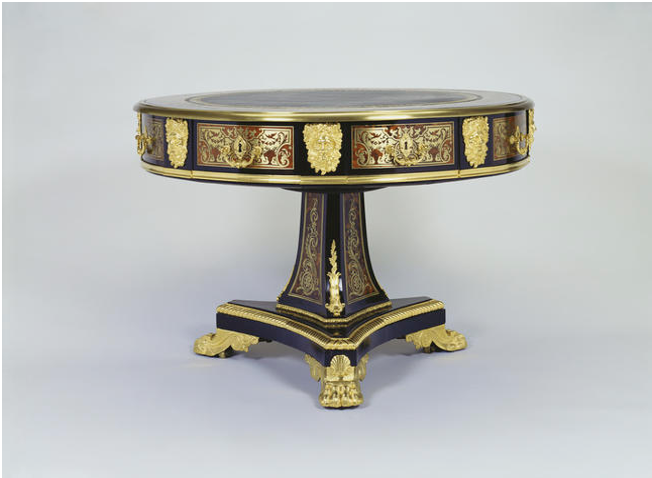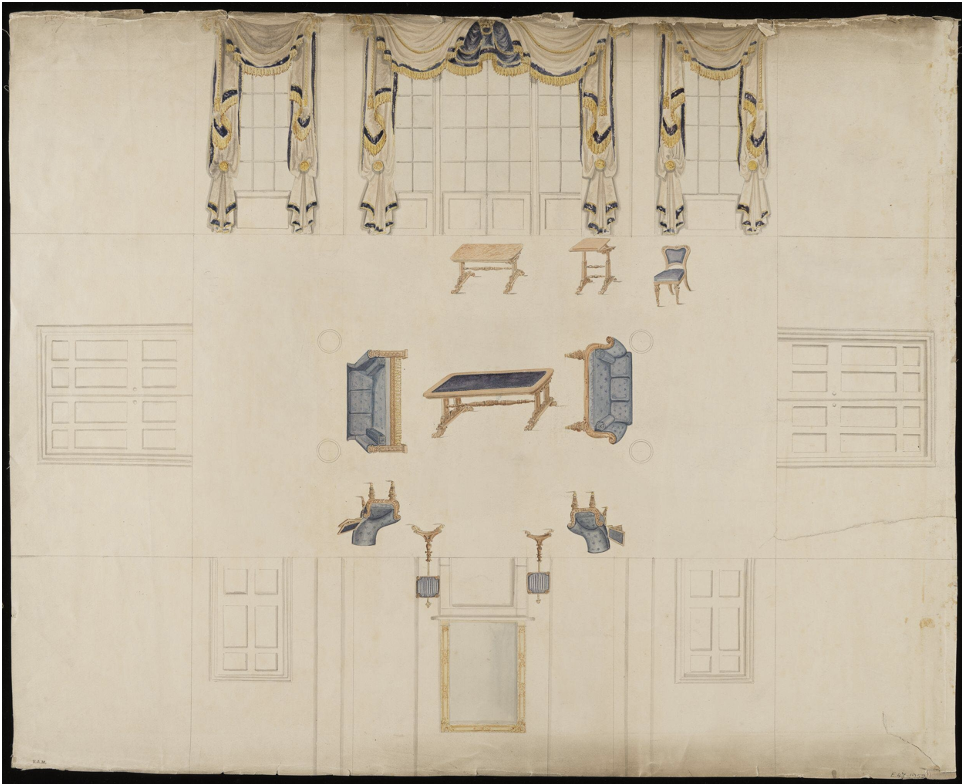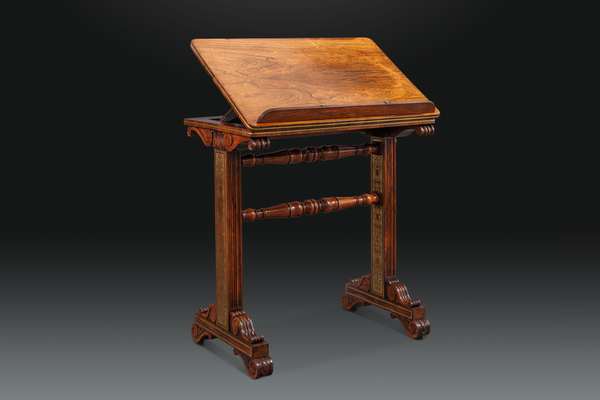Product Description
Provenance
Made for William Powlett, 2nd Baron Bolton (1782-1850) during the modernisation of his seat Hackwood Park in Hampshire in 1813.
By family descent until Hackwood and its contents were sold to William Berry, 1st Viscount Camrose in 1935.
By family descent until sold by Christie’s in the Hackwood Park house sale, 20th-22nd of April 1998 lot 20
A Private collection
Hyde Park Antiques, New York
Literature
Described in the May 1813 Gillows memorandum as one of the “two handsome rosewood reading tables” supplied for the library at Hackwood.
Tables of this sort with ratcheted tops were known as reading tables as they allowed their owners to adjust the height to suit books of varying sizes and allow references to be checked easily and conveniently. However it is very rare to encounter reading tables which employ the same degree of sophistication as seen on the present example. The use of fashionable rosewood and the beautifully executed and typical Gillows feet might be expected, but it is the brass inlay or Boulle work which is so unusual and would have raised the price of the order considerably.
In her seminal work on Gillows, Dr Susan Stuart wrote extensively about the library table which also formed part of this commission. The May 1813 memorandum included this very large table, a smaller drum table, the two reading tables and a set of chairs, all with Boulle inlay. Dr Stuart suggests that the brass work would have been supplied by an outside contractor of some sort and not made in house and, given that the suite was made by the Oxford Street (London) branch of Gillows, not the more commonly encountered Lancaster branch, she posits the theory that the Boulle work could have been completed by some of the major workshops based in London in this period known to have specialised in this sort of work such as that of George Bullock, Thomas Parker and Louis-Constantin Le Gaigneur (Stuart Gillows of Lancaster and London 1730-1840 Vol I p.290). As Dr Stuart admits, there is no evidence to prove this whatsoever but it is a tantalising possibility. It seems unlikely that the work has any relationship to Bullock-the designs are very different from his known style-but Parker and Le Gaigneur certainly supplied pieces with inlaid brass of similar feeling such as Parker’s centre table supplied for Carlton House and now in the Green Drawing Room in Windsor Castle.
 Centre table by Thomas Parker (RCIN 33461) note the Boulle panels on the drawer fronts
Centre table by Thomas Parker (RCIN 33461) note the Boulle panels on the drawer fronts
Intriguingly, the 1813 memorandum refers to the library table from the Hackwood suite as “style of Mr Andrews” (which is then scored out on the paper). Dr Stuart suggests that this means that Gillows were reusing certain stylistic elements from a previous order for “Mr Andrews” but perhaps it could also refer to the designer of the brass inlay? Unfortunately records relating to the London side of the Gillows firm from this period do not survive so it is impossible to know for certain.
Gillows of Oxford Street
Although the majority of surviving pieces of Gillows furniture are known to have been produced by the Lancaster part of the firm, the Oxford Street branch provided a convenient central London location for the most prestigious clients to place their orders and was a thriving concern overseen in this period by George and Richard Gillow. Dr Stuart contrasts the Hackwood library table with one supplied by the Lancaster branch to Tatton Park and concludes that, as might be expected, “the pieces made in 1813 bear testimony to the advanced design awareness of the Oxford Street partners” and “study of the large collections of nineteenth century room settings prepared for Oxford Street customers also reveals the quality and avante-garde nature of the firm’s work” (Stuart ibid p.290). It is therefore particularly interesting that our table is one of a small number of documented pieces from the Oxford Street workshops and certainly would appear to have been made in the most modern taste. Indeed without the documentation it is likely that the piece would have been dated to c.1820 by most furniture historians.
Many of the room setting drawings that Dr Stuart describes are now in the collections of the Victoria and Albert Museum in London and one of these drawings is particularly relevant to the current table as it shows a piece of identical form in situ.
 V&A Gillows undated room setting drawing prepared by the Oxford Street branch (E.47-1952)
V&A Gillows undated room setting drawing prepared by the Oxford Street branch (E.47-1952)
This table is an exceptional and rare example of its kind, made to the most exacting standards for an important client. It is both practical and decorative but equally it is one of those pieces that would enhance even the finest collections.
Research and essay by Christopher Coles.








Reviews
There are no reviews yet.